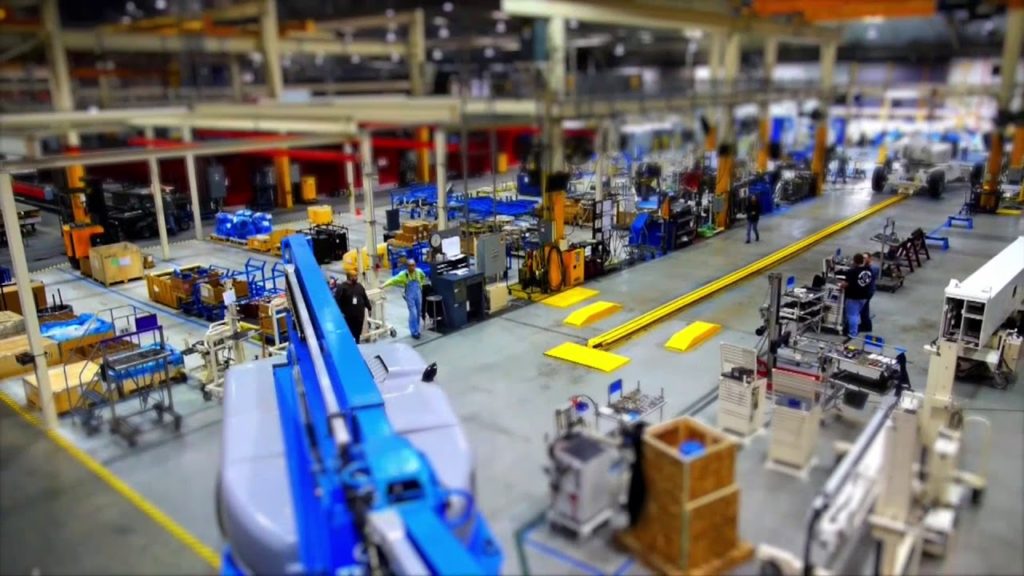In today’s rapidly advancing industrial landscape, the automated inspection of assembly lines is revolutionizing the way we approach quality control. As industries strive for excellence, the integration of automation into assembly lines has become a game-changer. This approach not only enhances efficiency but also ensures precision, consistency, and safety.

Understanding Automated Inspection
The concept of automated inspection involves using technology such as cameras, sensors, and artificial intelligence to monitor and evaluate the production process. By doing so, potential defects can be identified in real-time, minimizing errors and reducing waste.
Benefits of Automated Inspection
Automated inspection offers several advantages, such as:
- Increased Efficiency: By automating the inspection process, manufacturers can significantly reduce the time taken to identify and rectify defects.
- Improved Accuracy: Automated systems are less prone to human error, ensuring that defects are consistently detected and addressed.
- Cost Savings: Reducing waste and minimizing errors leads to significant cost savings in the long run.
Implementation in Various Industries
The implementation of automated inspection spans across various industries, including automotive, electronics, and consumer goods. Each of these sectors benefits from enhanced quality control and improved production processes.
Automotive Industry
In the automotive sector, automated inspection is crucial for ensuring the safety and reliability of vehicles. By using AI in automotive quality control, manufacturers can detect defects in components such as engines and transmissions, leading to safer and more reliable vehicles.
Electronics Industry
The electronics industry relies heavily on precision and accuracy. Automated inspection systems are used to detect defects in circuits and components, ensuring that products meet high-quality standards. For a deeper understanding of how AI aids in this sector, explore AI in semiconductor quality control.
Consumer Goods
In the consumer goods industry, automated inspection helps maintain product quality, ensuring that items such as food and beverages are safe for consumption. This not only protects consumers but also enhances brand reputation.
Technology Behind Automated Inspection
The technology that powers automated inspection systems includes advanced cameras, sensors, and AI algorithms. These components work in harmony to provide real-time data and analysis, allowing for quick decision-making and action.
Advanced Cameras and Sensors
High-resolution cameras and sensors are used to capture detailed images of products as they move along the assembly line. These images are then analyzed to detect any discrepancies or defects.
Artificial Intelligence and Machine Learning
AI and machine learning play a crucial role in automated inspection by analyzing large datasets and identifying patterns that indicate potential defects. This technology can learn and adapt over time, improving its accuracy and efficiency.
Challenges in Automated Inspection
While the benefits of automated inspection are clear, there are challenges to consider:
- Initial Cost: Implementing automated inspection systems requires a significant upfront investment in technology and infrastructure.
- Maintenance and Upkeep: Regular maintenance is necessary to ensure that the system operates effectively and efficiently.
- Data Management: Handling and analyzing large volumes of data can be challenging and requires robust data management solutions.
Future of Automated Inspection
The future of automated inspection is promising, with ongoing advancements in technology. As systems become more sophisticated, we can expect even greater accuracy and efficiency in quality control processes.
Integration with IoT
The integration of the Internet of Things (IoT) with automated inspection systems will lead to more interconnected and intelligent manufacturing processes. This will enable real-time monitoring and control of production lines from anywhere in the world.
Enhanced AI Capabilities
As AI technology continues to evolve, we can expect automated inspection systems to become even more accurate and efficient. This will lead to improved product quality and reduced waste.
Conclusion
The automated inspection of assembly lines is a critical component of modern manufacturing. By leveraging advanced technology, industries can ensure high-quality products, reduce waste, and remain competitive in a rapidly changing market. For further reading on the role of AI in manufacturing, visit AI use cases for quality control in manufacturing.

FAQs
What is automated inspection in assembly lines?
Automated inspection involves using technology such as cameras, sensors, and AI to monitor and evaluate production processes in real-time, identifying defects and ensuring quality control.
How does AI improve automated inspection?
AI enhances automated inspection by analyzing large datasets, identifying patterns, and detecting potential defects with high accuracy and efficiency.
What industries benefit from automated inspection?
Industries such as automotive, electronics, and consumer goods benefit greatly from automated inspection, ensuring high-quality products and efficient production processes.
This article contains affiliate links. We may earn a commission at no extra cost to you.

